| View previous topic :: View next topic |
| Author |
Message |
cooltouch


Joined: 15 Jan 2009
Posts: 9097
Location: Houston, Texas
|
 Posted: Sat Sep 12, 2015 1:50 am Post subject: Tamron 60B SP 300mm f/2.8 Resolution Tests Posted: Sat Sep 12, 2015 1:50 am Post subject: Tamron 60B SP 300mm f/2.8 Resolution Tests |
 |
|
cooltouch wrote:
After seeing just how incredibly sharp the Canon 300mm f/2.8 L and 300mm f/2.8 Fluorite lenses are, based on a recent thread here, I decided that I need to put my Tamron SP 300/2.8 to the test and see just what it was capable of. I chose a section of our backyard fence and shot with the lens just by itself and then I started stacking teleconverters to see how it would hold up. I felt that the fence would be a good subject because of all the textures it exhibits. And as I'm sure you know, a good lens will be able to keep the varied textures separate and distinct from each other, instead of them becoming just a big mushy mess, which can happen with not-so-sharp optics.
The camera I used is a 24.3 mp Sony NEX 7. I was shooting raw files at ISO 100 and I used Photoshop's raw converter to convert the files to jpg. I've uploaded the full-size files, so if you click on any of them you should be able to view them full-size in your browser. I just noticed something as I was doing swapping screens back and forth between the image in its own browser window and the image as it's displayed here in the forum. There is a significant difference in the appearance of sharpness. Images shown here in the forum are noticeably less sharp than when I load the images into their own window. I wonder why that is. So anyway, all the more reason for you to click on the images to load them into your browser for a better comparison.
I was shooting under an overcast sky rather late in the afternoon, so I had to employ the use of a stout tripod and the NEX's self timer. To insure optimum sharpness, I used the NEX's focus peaking feature, but I find that I never let this feature have the last word. I always check the image using the NEX's 5.9x and 11x magnification capabilities and I find that usually the focus can be tweaked a little more than the focus peaking feature indicates.
This shot is just the NEX mounted on the 300mm f/2.8, shot at f/2.8. I concentrated my focus on a knot on one of the fence planks in more or less the center of the image:
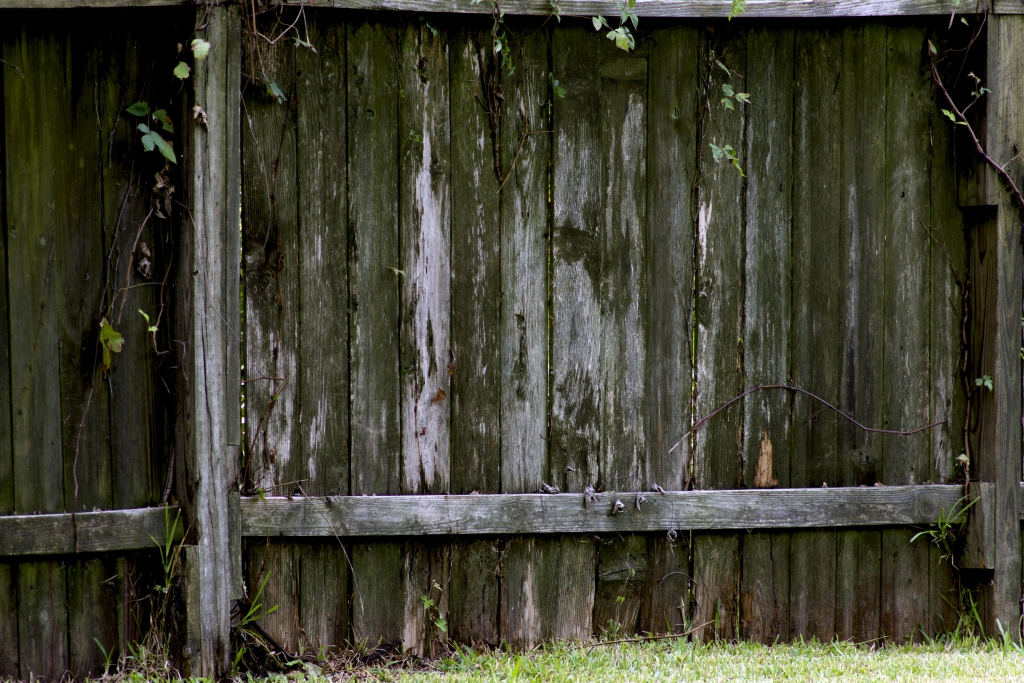
Next, I mounted a Tamron SP 1.4x teleconverter and focused on the same knot. It's a large knot in the plank, which can be seen just above the center of the image. The effective focal length was 420mm and the effective aperture was f/4:

Then I mounted a Tamron SP 2x teleconverter behind the 1.4x TC, which gave an effective focal length of 840mm with an effective aperture of f/8.
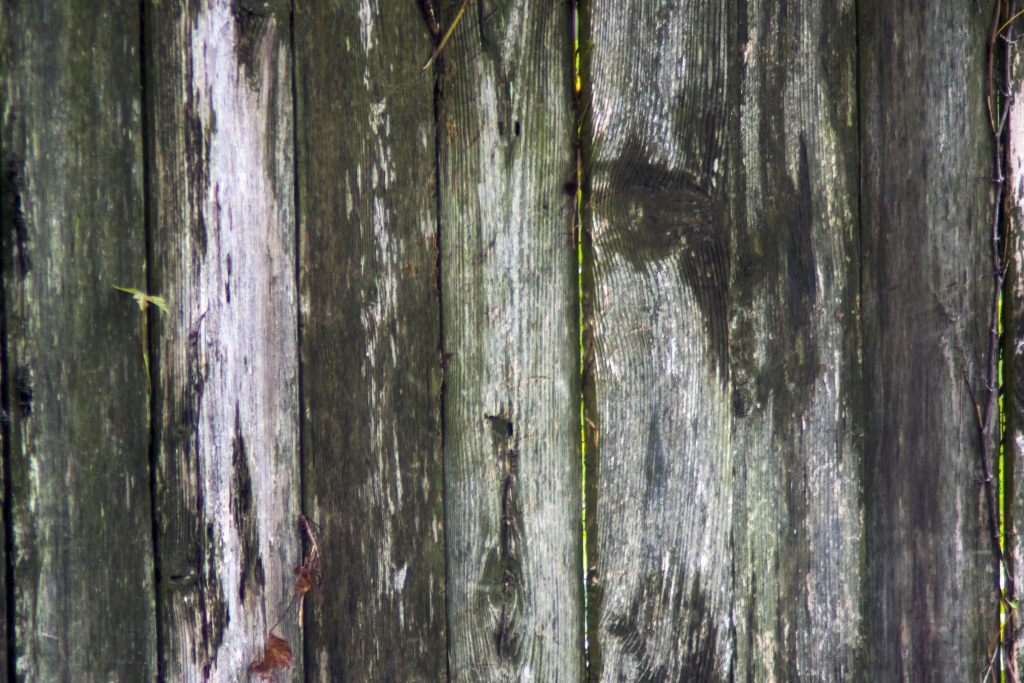
And finally, I mounted another Tamron SP 2x teleconverter behind the 2x and 1.4x, which gave an effective focal length of 1680mm with an effective aperture of f/16.
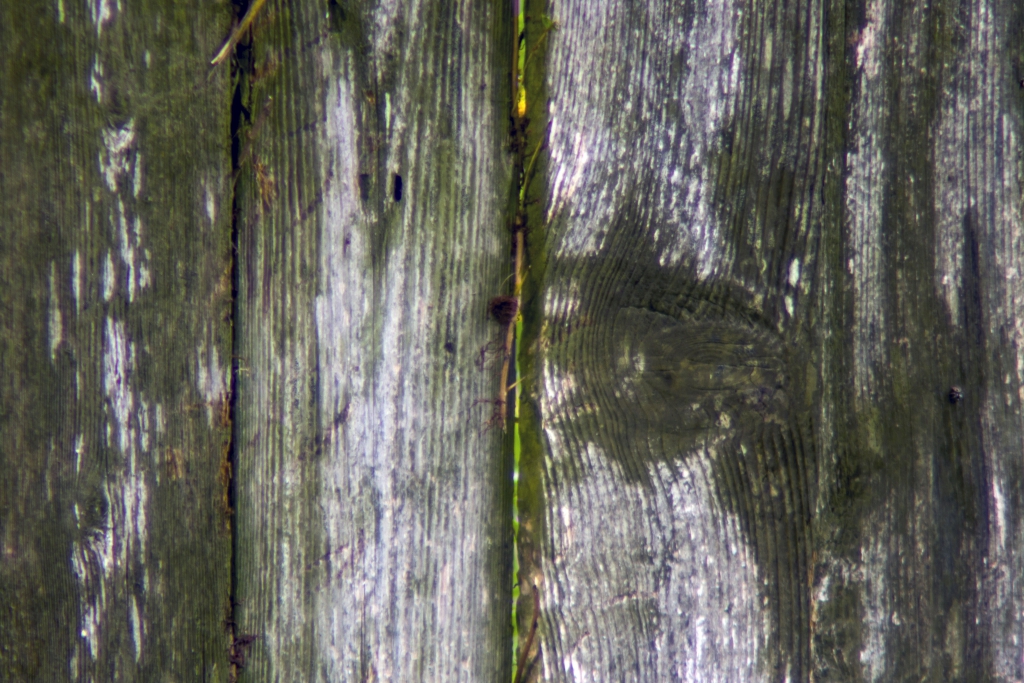
Now, after shooting the pic with no TCs I also shot the same scene with the lens stopped down to f/8. I wanted to be able to compare the differences. Turns out there wasn't much, really. Here's the one shot at f/2.8 again:

And here's the one shot at f/8:
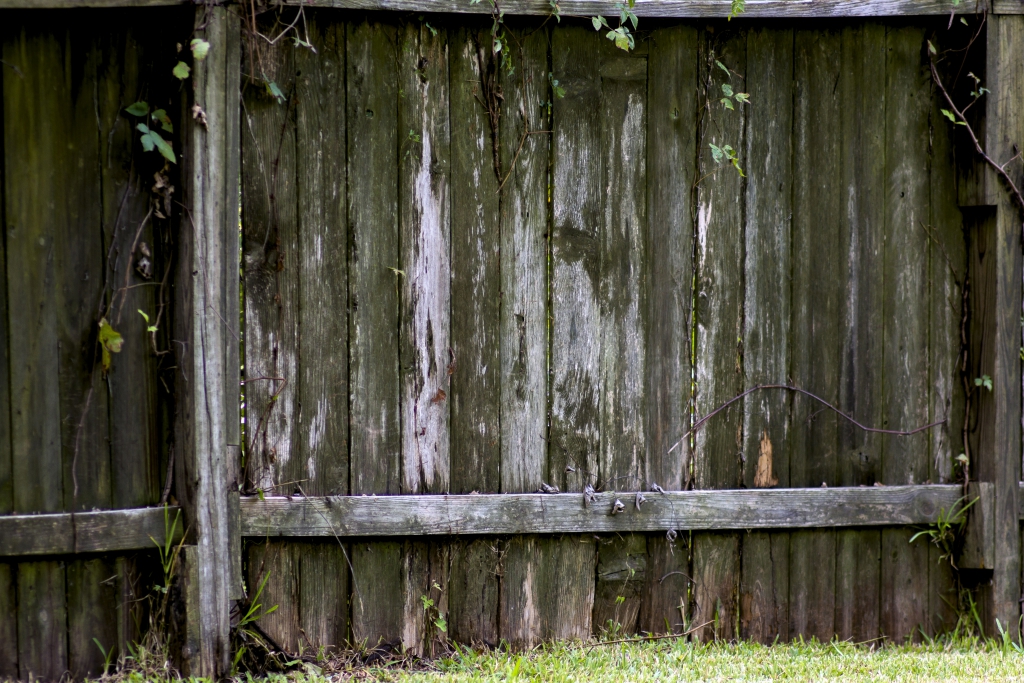
Okay, the one taken at f/8 is sharper, but not by a huge amount. A fairly small amount, really. I found it quite surprising that this lens was as sharp as it was wide open. There is one thing about the Tamron that I didn't notice nearly as much with the Canon 300/2.8s -- the Tamron will give off fairly pronounced levels of purple CA in high-contrast situations. Shooting the fence such as I did did not really cause it to generate a noticeable amount of CA. But in other situations it has. Still, this isn't anything that can't be fixed in post, so it really isn't much of anything to worry about.
If you have a fast telephoto -- like a 300/2.8 or 400/4 (or 4.5 even), etc, if you would like to post some images here, please do so. I'd really like to see how your fast lens(es) perform.
_________________
Michael
My Gear List: http://michaelmcbroom.com/photo/gear.html
My Gallery: http://michaelmcbroom.com/gallery3/index.php/
My Flickr Page: https://www.flickr.com/photos/11308754@N08/albums
My Music: https://soundcloud.com/michaelmcbroom/albums
My Blog: http://michaelmcbroom.com/blogistan/ |
|
| Back to top |
|
 |
cooltouch


Joined: 15 Jan 2009
Posts: 9097
Location: Houston, Texas
|
 Posted: Sun Sep 13, 2015 4:22 am Post subject: Posted: Sun Sep 13, 2015 4:22 am Post subject: |
 |
|
cooltouch wrote:
Okay, I get it. Staring at an old fence's wood grain can get rather boring -- but it does give a good idea of a lens's sharpness. Nonetheless, today I noticed one of our rose bushes had some nice blooms on it, so I thought a nice rose might be more interesting to look at, while sill providing some idea of the lens's sharpness and contrast.
I still played around with teleconverters this time, but instead of using the dedicated Tamron TCs, I decided to use my Nikon mount ones: a TC-14b, TC-201, and a Vivitar macro-focusing TC. Honestly, I think the results were surprisingly good.
Following are four photos, with which I used my NEX 7 set to ISO 100. I set the lens aperture to f/2.8 and left it there for all four images. I didn't use a tripod, instead I just rested the camera/lens on top of my car, and set the self-timer. I used Photoshop's raw image converter on the images. This was the only processing I did to the photos. I uploaded the full size images to the mflenses server, so if you click on them, you'll be able to check out the full size images in your browser.
First, the Tamron 300/2.8 alone, at f/2.8:

Next, the Tamron 300/2.8 with a Nikon TC-14b for an effective 420mm @ f/4:
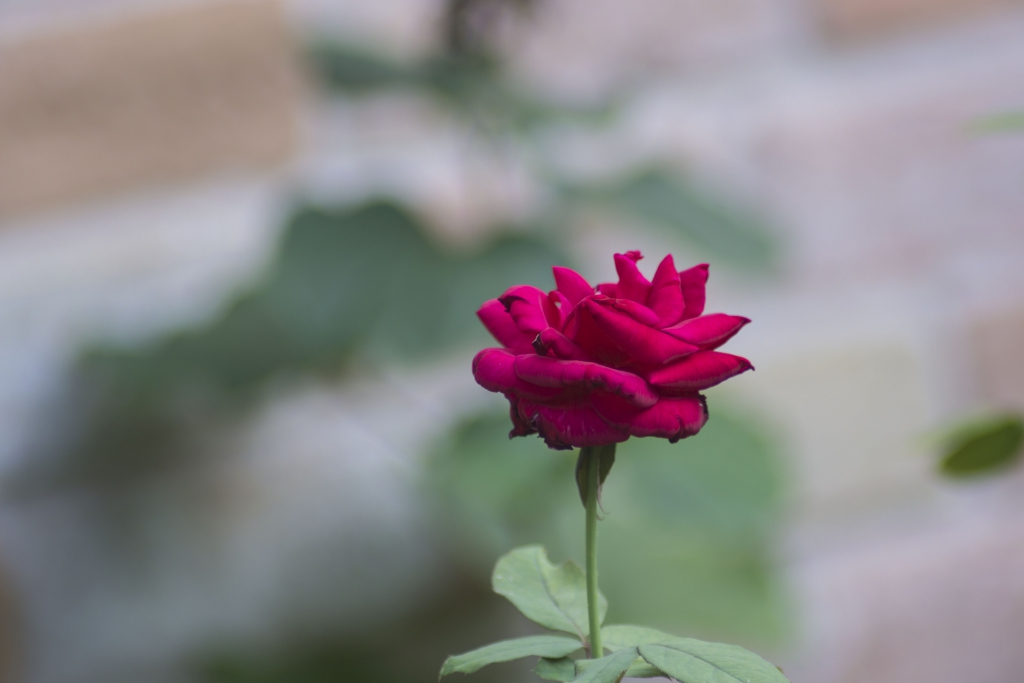
Then I attached a Nikon TC-201 to the back of the TC-14b, which bumped things up to 840mm @ f/8:
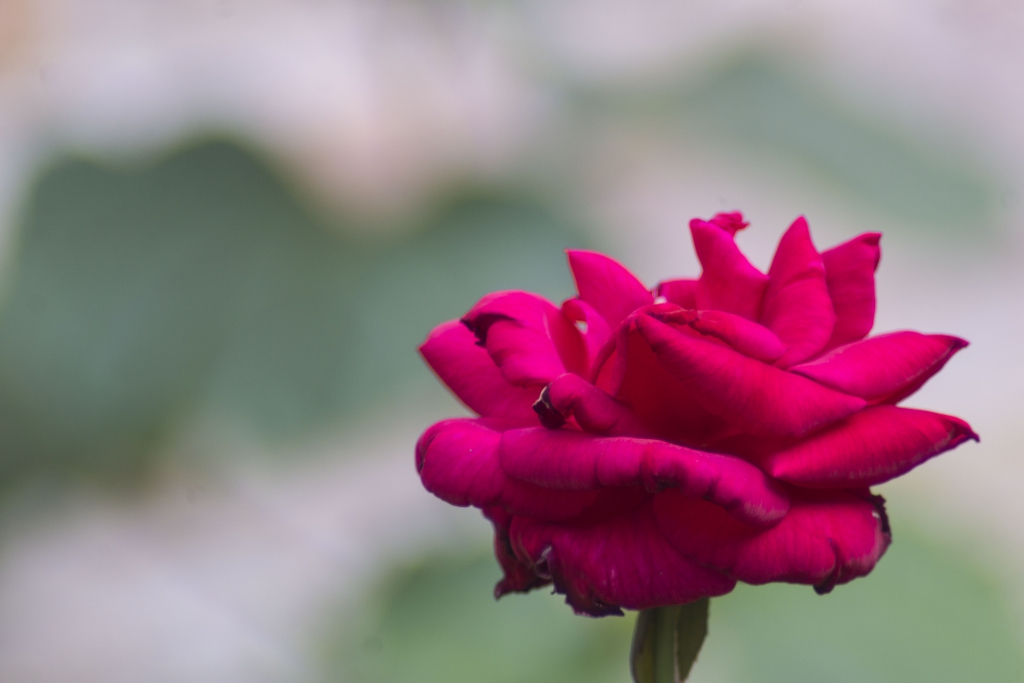
And finally I added the Vivitar macro-focusing TC, for an effective 1680mm @ f/16:

Now, in this post and the above one, you'll note that I didn't multiply everything by the crop factor, i.e., 1.5x. If I were to do that, then we're looking at an initial effective FF equivalent of 450mm f/2.8, then 675mm f/4 with the 1.4x, 1350mm f/8 when the first 2x is added, and finally 2700mm f/16 with the addition of the second 2x.
Also, as I mentioned above, the images as displayed in the forum do not appear to be as sharp as when they''re loaded in my browser. So, by all means, click on them to check them out in your browser.
Again, I'm quite surprised at the level of detail with three stacked teleconverters. The final image is quite usable just as it sits, I think.
_________________
Michael
My Gear List: http://michaelmcbroom.com/photo/gear.html
My Gallery: http://michaelmcbroom.com/gallery3/index.php/
My Flickr Page: https://www.flickr.com/photos/11308754@N08/albums
My Music: https://soundcloud.com/michaelmcbroom/albums
My Blog: http://michaelmcbroom.com/blogistan/ |
|
| Back to top |
|
 |
Kei


Joined: 08 Jan 2015
Posts: 142
Location: S. Wales UK
|
 Posted: Sun Sep 13, 2015 9:31 am Post subject: Posted: Sun Sep 13, 2015 9:31 am Post subject: |
 |
|
Kei wrote:
It's surprising to see how well it holds up with so many stacked TC's. I don't use any TC's with my Nikon 300mm f2.8 AI-s. (primarily because I only have a tamron 140F and 01F which don't fit) Performance is generally great, but it does suffer from some slight corner softness, some purple fringing and some longitudinal CA. (all very slight really)
Wide open
 IMG_0302 by Kyle, on Flickr IMG_0302 by Kyle, on Flickr
 Sparrow by Kyle, on Flickr Sparrow by Kyle, on Flickr
 Sparrow by Kyle, on Flickr Sparrow by Kyle, on Flickr
F4
 East Usk Lighthouse by Kyle, on Flickr East Usk Lighthouse by Kyle, on Flickr
 Butterfly by Kyle, on Flickr Butterfly by Kyle, on Flickr
_________________
Contax Zeiss Distagon 35mm f1.4, Zeiss Planar 85mm f1.4, Zeiss Vario-sonnar 35-70mm f3.4
Mamiya RB/RZ67 RZ67 Pro II, 65mm f4 L-A, 75mm f4.5 Shift, 127mm f3.5 K/L
Mamiya m645 645 1000S, 645J, 645AFD M 35mm f3.5 C, 55mm f2.8 AF, 80mm f1.9 N, 80mm f2.8 C, 120mm f4 macro, 150mm f2.8 A, 210mm f4 ULD, 210mm f4 C
Tamron Primes 17mm f3.5, 24mm f2.5, 90mm f2.8, 135mm f2.5, 180mm f2.5, 300mm f5.6
Tamron Zooms 24-48mm f3.5-3.8, 28-80 f3.5-4.2, 35-80 f2.8-3.8, 70-210mm f3.5, 75-250mm f3.5-5.6
Olympus OM Zuiko 24mm f2.8, Zuiko 28mm f2.8, Zuiko 50mm f1.8, Sigma 600mm f8
Nikon MF 24mm f2.8 N.C, 28mm f2 AI-s, 35mm f1.4 AI-s, 50mm f1.2 AI-s, 50mm f1.8 AI-s, 135mm f2.8 AI, 300mm f2.8 AI-s
Nikon AF F5, D810 16mm f2.8 AF-D, 20mm f1.8 AF-S, 55mm f2.8 AF micro, Tokina 100mm f2.8 macro, 80-200mm f2.8 AF-D
Canon FD T90, T50, AT-1, 50mm f1.8, 135mm f3.5
|
|
| Back to top |
|
 |
Lloydy


Joined: 02 Sep 2009
Posts: 7788
Location: Ironbridge. UK.
Expire: 2022-01-01
|
 Posted: Sun Sep 13, 2015 7:51 pm Post subject: Posted: Sun Sep 13, 2015 7:51 pm Post subject: |
 |
|
Lloydy wrote:
That Tamron SP 300/2.8 has a great reputation, and it's easy to see why. The performance with the converters is impressive as well.
_________________
LENSES & CAMERAS FOR SALE.....
I have loads of stuff that I have to get rid of, if you see me commenting about something I have got and you want one, ask me.
My Flickr https://www.flickr.com/photos/mudplugga/
My ipernity -
http://www.ipernity.com/home/294337 |
|
| Back to top |
|
 |
cooltouch


Joined: 15 Jan 2009
Posts: 9097
Location: Houston, Texas
|
 Posted: Mon Sep 14, 2015 2:33 am Post subject: Posted: Mon Sep 14, 2015 2:33 am Post subject: |
 |
|
cooltouch wrote:
Yes, Kyle and Lloyd, I agree -- the Tamron did quite welll with the stacked TCs. But I'll wager that any optic of similar or superior quality will fare just as well.
Kyle, thanks for posting those photos. You've included a few that a substantial amount of CA would be showing with a less well corrected optic, like the Tamron SP 60-300, for example, which is a great zoom, but does tend to show a fair amount of CA in bright, high-contrast situations. I've found that hard lines against bright backgrounds are often when fringing CA is the most obvious. But your Nikkor is so well controlled that any CA in your photos is, for all practical intents and purposes, nonexistent. Any purple fringing or longitudinal CA that your lens may be exhibiting isn't worth commenting about. Very impressive. I can't really evaluate corner sharpness with the images that you've submitted, but I'd say that edge sharpness is still excellent.
Here is a 100% crop of a male grackle I shot a few years ago with my Tamron 300 -- it has the sort of high contrast situation where I would expect to see CA fringing, especially of the purple variety, with a less well-controlled lens. But as you can see, the CA is very well controlled. There is some slight green fringing, but fortunately it is occurring against green leaves, so there's a sort of natural camouflage happeining.  This photo was taken with my 10.1mp EOS XS. I'm not sure of the ISO -- it looks a bit too noisy to be ISO 100: This photo was taken with my 10.1mp EOS XS. I'm not sure of the ISO -- it looks a bit too noisy to be ISO 100:

_________________
Michael
My Gear List: http://michaelmcbroom.com/photo/gear.html
My Gallery: http://michaelmcbroom.com/gallery3/index.php/
My Flickr Page: https://www.flickr.com/photos/11308754@N08/albums
My Music: https://soundcloud.com/michaelmcbroom/albums
My Blog: http://michaelmcbroom.com/blogistan/ |
|
| Back to top |
|
 |
|
|
|
You cannot post new topics in this forum
You cannot reply to topics in this forum
You cannot edit your posts in this forum
You cannot delete your posts in this forum
You cannot vote in polls in this forum
|
